Fulvestrant
Uses
Fulvestrant is used in the treatment of breast cancer.
How it Works
Fulvestrant works by blocking the action of estrogen on breast cancer cells. This mechanism can reduce or halt the growth of certain breast cancer cells that depend on estrogen for their growth.
Side Effects
Common side effects of Fulvestrant include nausea, vomiting, back pain, fatigue, hot flashes, decreased appetite, constipation, bone pain, joint pain, cough, injection site pain, headache, pain in extremities, musculoskeletal pain (bone, muscle, or joint), breathlessness, increased alanine aminotransferase, increased aspartate aminotransferase, and weakness.
Expert Advice
- Fulvestrant is used for the treatment of hormone-dependent breast cancer.
- It should only be administered to women who have undergone menopause and cannot become pregnant.
- Fulvestrant is given as a slow injection into the muscles (intramuscular) of the buttock.
- Inform your doctor if you have any of the following conditions:
- Bleeding disorders
- Kidney disease
- Liver disease
- Notify your doctor if you are receiving any medications to prevent blood clots.
- Do not take Fulvestrant if you are pregnant or breastfeeding.
Other Combinations
Related Medications
Fulvestrant 250mg

₹8,673.5
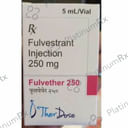
₹10,210.4
MRP ₹15,708.3
Fulvestrant 250mg
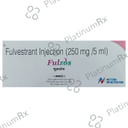
₹16,000

₹10,210.4
MRP ₹15,708.3
Fulvestrant 250mg

₹21,000

₹10,210.4
MRP ₹15,708.3
Fulvestrant 250mg

₹14,100

₹10,210.4
MRP ₹15,708.3
Fulvestrant 250mg

₹13,417

₹10,210.4
MRP ₹15,708.3
Fulvestrant 250mg

₹14,040

₹10,210.4
MRP ₹15,708.3
Fulvestrant 250mg

₹18,000

₹10,210.4
MRP ₹15,708.3
Fulvestrant 250mg
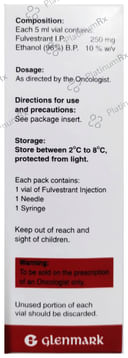
₹9,000

₹10,210.4
MRP ₹15,708.3
Fulvestrant 250mg

₹13,300.1

₹10,210.4
MRP ₹15,708.3
Fulvestrant 250mg

₹14,000

₹10,210.4
MRP ₹15,708.3
Fulvestrant 250mg

₹12,521

₹10,210.4
MRP ₹15,708.3
Fulvestrant 250mg

₹13,511

₹10,210.4
MRP ₹15,708.3
Fulvestrant 250mg

₹15,054.5

₹10,210.4
MRP ₹15,708.3
Fulvestrant 250mg

₹14,500

₹10,210.4
MRP ₹15,708.3
Fulvestrant 250mg

₹18,000

₹10,210.4
MRP ₹15,708.3
Fulvestrant 250mg
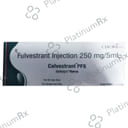
₹10,889.5

₹10,210.4
MRP ₹15,708.3
Fulvestrant 250mg

₹24,000

₹10,210.4
MRP ₹15,708.3
Fulvestrant 250mg
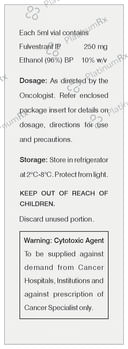
₹17,000

₹10,210.4
MRP ₹15,708.3
Fulvestrant 250mg

₹13,135

₹10,210.4
MRP ₹15,708.3
Fulvestrant 250mg

₹17,500

₹10,210.4
MRP ₹15,708.3
Fulvestrant 250mg

₹42,200

₹10,210.4
MRP ₹15,708.3
Fulvestrant 250mg

₹15,798

₹10,210.4
MRP ₹15,708.3
Fulvestrant 250mg

₹10,210.4
MRP ₹15,708.3
Fulvestrant 50mg

₹11,750.2
Fulvestrant 500mg

₹42,200